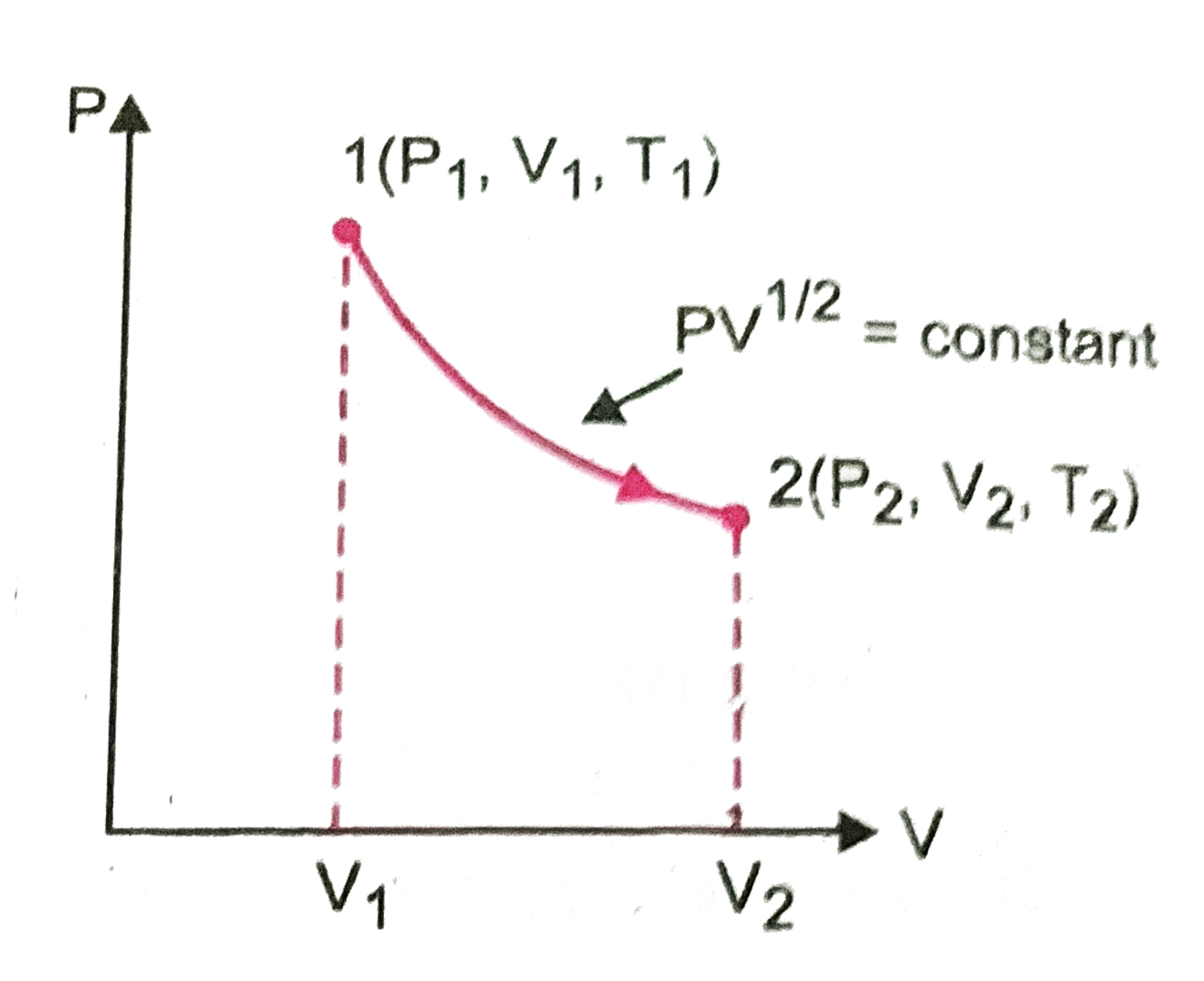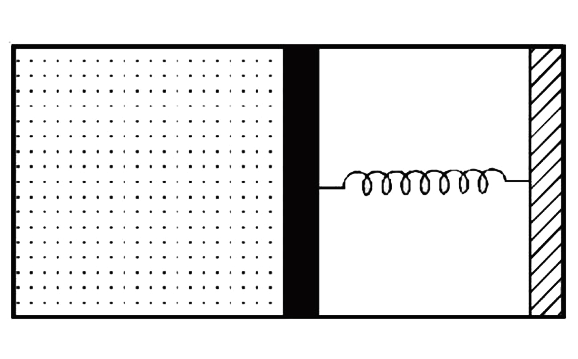An ideal monoatomic gas is initially in state 1 with pressure p1=20atm and volume v1=1500cm3. If is then taken to state 2 with pressure p2=1.5p1 and volume v2=2v1. The change in internal energy from state 1 to state 2 is equal to
2000J
3000J
6000J
9000J
The correct Answer is:D
p1=20×105N/m2,v1=1500×10−6m3
p2=30×105N/m2,v2=300×10−6m3
T1=p1v1nR and T2=p2v2nR
dU=nCvdT=n.32R.(T2−T1)
=n.32R(p2v2−p1v1)nR
=32(p2v2−p1v1)=9000J
Topper's Solved these Questions
- BOOK - RESONANCECHAPTER - KTG & THERMODYNAMICSEXERCISE - PART -III25videos
KTG & THERMODYNAMICS
- BOOK - RESONANCECHAPTER - KTG & THERMODYNAMICSEXERCISE - PART -IV10videos
KTG & THERMODYNAMICS
- BOOK - RESONANCECHAPTER - KTG & THERMODYNAMICSEXERCISE - Exercise-21videos
KTG & THERMODYNAMICS
- BOOK - RESONANCECHAPTER - KINETIC THEORY OF GASES AND THERMODYNAMICSEXERCISE - Exercise64videos
KINETIC THEORY OF GASES AND THERMODYNAMICS
- BOOK - RESONANCECHAPTER - MAGNETIC FIELD AND FORCESEXERCISE - Exercise65videos
MAGNETIC FIELD AND FORCES
Similar Questions
An ideal monoatomic gas initially in state 1 with pressure P1=20 atm and volume V11500cm3 it is then taken to state 2 with pressure P2=1.5P1 and volume V2=2V1 find the change in internal energy in this process in KJ. (take 1atm lit =100J)
View SolutionTwo moles of an ideal monatomic gas, initially at pressure p1 and volume V1, undergo an adiabatic compression until its volume is V2. Then the gas is given heat Q at constant volume V2.
(i) Sketch the complete process on a p-V diagram.
(b) Find the total work done by the gas, the total change in its internal energy and the final temperature of the gas. [Give your answer in terms of p1,V1,V2,QandR]View Solution
Knowledge Check
- Question 1 - Select One
A monatomic gas at pressure P1 and volume V1 is compressed adiabatically to 1(8)th of its original volume. What is the ginal pressure of the gas ?
A64P1BP1C16P1D32P1 - Question 2 - Select One
If n moles of an ideal gas are expanded is isothermally and reversibly from an initial state in which it has pressure p1 and volume V1 to the final state of volume V2 and pressure P2, then
AΔSsys=−2.303nRlog(P1p2)BΔSsys=2.303Rnlog(P1p2)CΔSsys=−2.303Rnlog(P1p2)DΔSsys=2.303nRlog(P1p2) - Question 3 - Select One
A monoatomic gas at pressure P1 and volume V1 is compressed adiabatically to 18th of its original volume. What is the final pressure of gas.
A64P1BP1C16P1D32P1
An ideal gas (Cp/Cv=γ) having initial pressure P0 and volume V0 (a) The gas is taken isothermally to a pressure 2P0 and then adiabatically to a pressure 4P0. Find the final volume. (b) The gas is brought back to its initial state. It is adiabatically taken to a pressure 2P0 and then isothermally to a pressure 4P0. Find the final volume.
View SolutionConsider a P−V diagram in which the path followed by one mole of perfect gas in a cyclinderical container is shown in (figure)
(a) Find the work done when the gas is taken from state 1 to state 2.
(b) What is the ratio of temperatures T1/T2,ifV2=2V1?
(c ) Given the internal energy for one mole of gas at temperature Tis(3/2)RT, find the heat supplied to the gas when it is taken from state 1 to 2, with V2=2V1.
 View Solution
View SolutionA sample of gas at 273K has a pressure of P1 and a volume of V1. When the pressure is changed to P2, what is the volume V2? (Assume the temperature remains constant)
View SolutionAn ideal monoatomic gas is confined in a horizontal cylinder by a spring loaded piston (as shown in the figure). Initially the gas is at temperature T1, pressure P1 and volume V1and the spring is in its relaxed state. The gas is tehn heated very slowly to temperature T2,pressure P2and volume V2. During this process the piston moves out by a distance x. Ignoring the friction between the piston and the cylinder, the correct statement (s) is (are)
 View Solution
View SolutionWhen volume changes from V to 2V at constant pressure(P) then the change in internal energy will be:
View Solution

